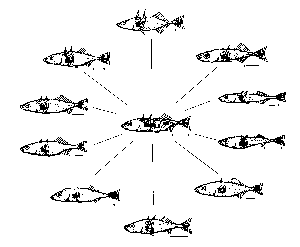Adaptive Radiation of the Threespine Stickleback

Threespine stickleback (Gasterosteus aculeatus) comprises a complex of differentiated populations, many of which are clearly adapted to local environments. This complex of freshwater populations is thus called an adaptive radiation. The radiation is unusual in several respects. First, the freshwater populations (peripheral images in the wheel) are thought to have evolved from a relatively uniform oceanic ancestor like that which exists in the north temperate Atlantic and Pacific oceans today (central image in the wheel). Thus, the characteristics of oceanic fish can be used to identify ancestral characteristics relative to the freshwater radiation, which is unusual in that much of this radiation has arisen since the last glacial maximum. About 12,000 years ago ice began to retreat, permitting colonization of freshwater habitats by oceanic fish. These populations have adapted rapidly to new habitats, often giving rise repeatedly and independently, to similar phenotypes (ecotypes) in similar environments, and sometimes, to new species. Differences have evolved in the plasticity of behavior, life history, morphology, and underlying patterns of gene expression. We take advantage of this radiation to study evolution of these phenotypes by comparing freshwater ecotypes with their oceanic ancestors and by contrasting independently-evolved populations within ecotypes. These comparisons enable us to ask a diversity of questions concerning the interface between plasticity and evolution. Because we have ample evidence of rapid, genetically-based population responses to rapidly changing environments, we also can explore the interface between plasticity and evolution in very exciting ways.